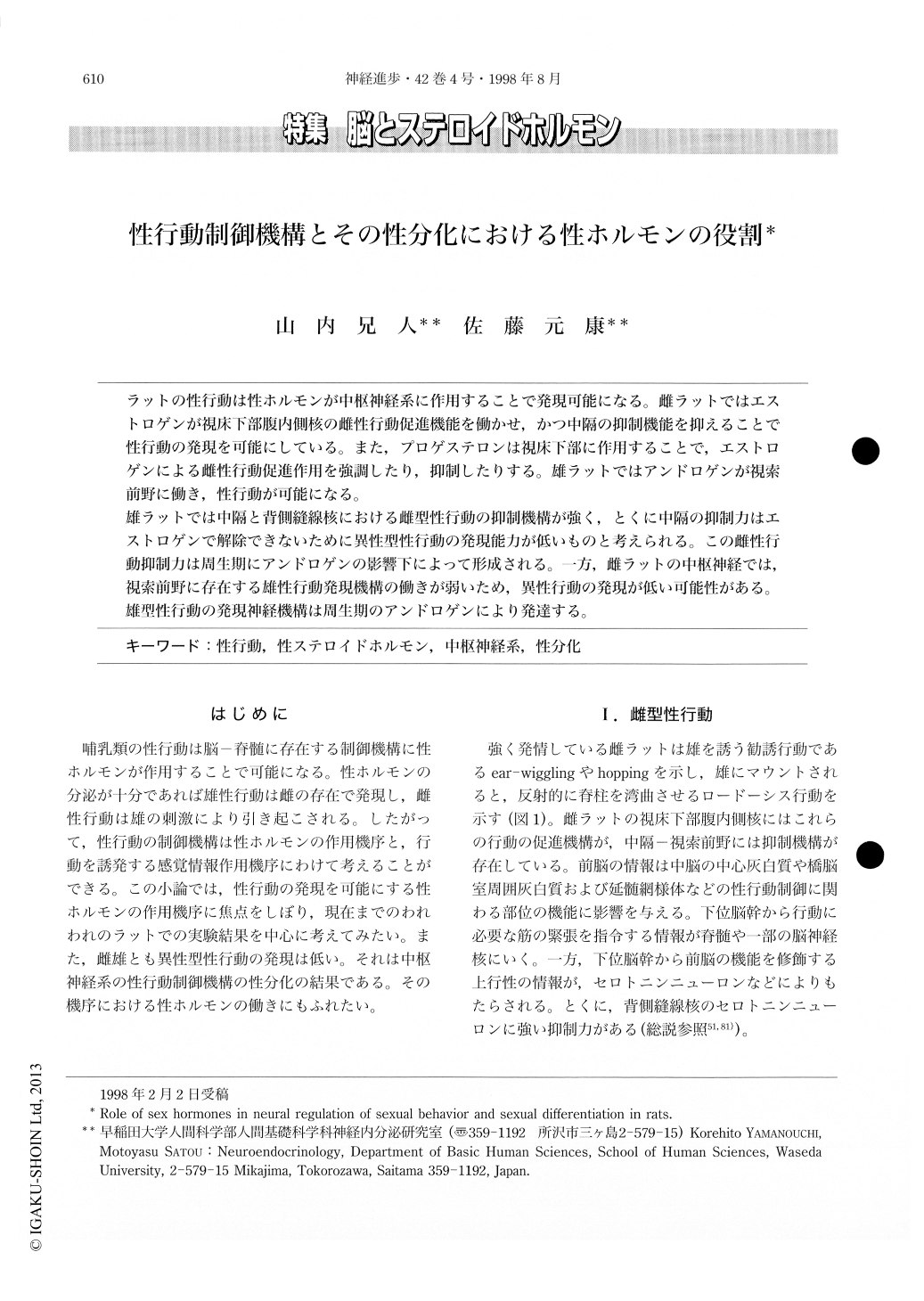Japanese
English
- 有料閲覧
- Abstract 文献概要
- 1ページ目 Look Inside
ラットの性行動は性ホルモンが中枢神経系に作用することで発現可能になる。雌ラットではエストロゲンが視床下部腹内側核の雌性行動促進機能を働かせ,かつ中隔の抑制機能を抑えることで性行動の発現を可能にしている。また,プロゲステロンは視床下部に作用することで,エストロゲンによる雌性行動促進作用を強調したり,抑制したりする。雄ラットではアンドロゲンが視索前野に働き,性行動が可能になる。
雄ラットでは中隔と背側縫線核における雌型性行動の抑制機構が強く,とくに中隔の抑制力はエストロゲンで解除できないために異性型性行動の発現能力が低いものと考えられる。この雌性行動抑制力は周生期にアンドロゲンの影響下によって形成される。一方,雌ラットの中枢神経では,視索前野に存在する雄性行動発現機構の働きが弱いため,異性行動の発現が低い可能性がある。雄型性行動の発現神経機構は周生期のアンドロゲンにより発達する。
Sexual behavior is regulated by the interaction between ovarian hormones and the central nervous system in the rat. In the female rat brain, the ventromedial hypothalamus (VMH) produces lordosis (a form of female sexual behavior) facilitating influence, and the lateral septum (LS) and the dorsal raphe nuclues (DRN) exert an inhibiting influence. Estrogen activates the function of the VMH and release the inhibition in the LS, because the direct application of estrogen into the VMH and LS has been reported to potentiate lordosis.

Copyright © 1998, Igaku-Shoin Ltd. All rights reserved.


